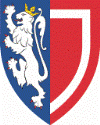Balliol College Archives & Manuscripts |
Back to: HOME > College History
Chemistry at Balliol: History
Balliol was one of the first Colleges in the University to commit itself to chemistry. In 1853, a small but purpose-built cellar laboratory was commissioned as part of a new building. Benjamin Jowett (Balliol 1835, Master 1870-1893) was the moving force behind this far-sighted initiative, but Henry JS Smith (Balliol 1844, FRS 1861) was the first Fellow to teach chemistry. Best known as a mathematician, Jowett thought him the ablest man he ever met, and it was said that he could as well have excelled in classics as mathematics. He got up the necessary chemistry with effortless superiority, only slightly ahead of his pupils, attending a short course in London in mid-1853.
When Benjamin Collins Brodie the younger (Balliol 1834, FRS), who had studied at Giessen with Liebig, was elected to the Aldrichian Professorship of Chemistry in 1855, the University had no laboratory for him, so he was allowed to work in the Balliol Laboratory for several years. Brodie grappled with very complex systems (graphite intercalation derivatives, for example) quite beyond the scope of the techniques available to him, with little of lasting significance to reward his labours, and indeed he was deceived into thinking graphite an element (graphon) distinct from carbon, whereas it is of course merely an allotrope. Although he developed what he called a "chemical calculus", a mathematical approach to the description of chemical phenomena, few but he have understood the logic or point of it.
His academic descendants, however, have all left permanent marks on the subject, and his laboratory was the nucleus of a network of laboratories in Balliol cellars, and later Trinity's Dolphin Yard, which, known as the Balliol-Trinity Laboratories, served as the University Department of Physical Chemistry until 1941. All experimental activity was then transferred to the newly built Physical Chemistry Laboratory in South Parks Road (on the outside of which the arms of Balliol and Trinity declare its ancestry). Much fundamentally important work in Physical Chemistry was done in the Balliol-Trinity Laboratories, especially by CN Hinshelwood (Balliol HT 1919, FRS 1929, Nobel Laureate, chemical kinetics), EJ Bowen (Balliol 1915, FRS 1935, photochemistry) and RP Bell (Balliol 1924, FRS 1944, acid-base catalysis and equilibria).
Until after the Second World War, the College never had more than a single chemistry Tutorial Fellow, invariably on the physical side of the subject. But in 1945 RP Bell was joined by WA Waters, an organic chemist originally from Cambridge, who had been working in isolation at Durham before the War, proving - contrary to received wisdom - the intermediacy of free radicals in certain organic reactions.
In 1942 Christopher Longuet-Higgins (Balliol 1941, FRS 1958, Honorary Fellow 1969) performed what is probably the greatest intellectual feat by a Balliol undergraduate ever: still in his second year, he correctly proposed and rationalised a structure for diborane (a major conundrum and thorn in the side of valency theory) which involved a novel kind of bonding: this was published in the Journal of the Chemical Society before the end of his second year.
There was no Tutorial Fellow in inorganic chemistry until 1963, when Malcolm Green (Acton Tech., Imperial College and Cambridge, FRS 1985) was elected, bringing with him infectious enthusiasm for organometallic chemistry (and life in general), an exciting new field which was taking off seriously at that time. He moved on and upwards in 1989 when he became Professor of Inorganic Chemistry, a chair which is tied to St Catherine's College. But he remains very much part of the Balliol scene as an Emeritus Fellow, as does David Turner (Fellow 1967, FRS 1973, inventor of photoelectron spectroscopy).
All subjects in Balliol have done well out of the George Eastman Visiting Professorship, which goes with a Balliol Visiting Fellowship, but chemistry has been especially lucky when its turn has come to be host: the chemical incumbents have included giants such as Linus Pauling (1947-8; Nobel Laureate for Chemistry and Peace; bonding and molecular biology pioneer; discovered the alpha-helix while recuperating from a cold in Eastman House), Melvin Calvin (1967-8; Nobel Laureate, photosynthesis) and very recently Harry Gray (Director of the Beckman Institute, Caltech, a distinguished bioinorganic chemist) and Martin Karplus (of Karplus Equation fame).
For chemistry at Balliol today see the Undergraduate Courses.
You do not need to request permission to download or print one copy of any of the images on these pages for your personal private study or research purposes.
You do need to request permission in writing to use any of these images for any publication in any format, including any use on a website.
There is no charge for Archive enquiries, but donations for Archive purposes are always appreciated.
| Updated 11.viii.14
|
Balliol College All rights reserved © 2025 |
